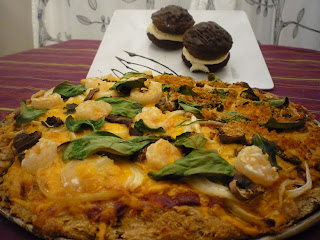After spending this lovely Sunday with my family outdoors, in the woods, making a bonfire and drinking snow-melt tea I find myself in a reflective state (although when am I not?!). Reflecting on how this lust for sustainable living has become quite suddenly tangible. How did the couple who used to drive to Ikea on a Sunday afternoon for something to do develop into the two that chopped wood, made a bonfire, boiled down snow for tea and sipped on it for hours all so the Mr. could bury a metal file in the coals to achieve the appropriate heat & consistency so he could then turn it into a camping knife?! I even write that in disbelief. Not only did it get me thinking about the development of our lives but also about the well renown 3 R’s we all grew up learning about. Listen as they so naturally roll off your tongue: Reduce. Reuse. Recycle.
So, the majority of us recycle, right? It would feel weird if we didn’t. It has become such a part of our lives that we would feel guilty throwing a plastic bottle into the garbage. And we are all familiar with the feeling that comes from throwing a recyclable item in the garbage and then digging through the mess once we realize the atrocious move that was mistakenly made. Recycling makes each of us feel good; like we’re doing our part; like we’re saving the world. And it’s true, it most certainly helps (although there is some question about how loyal recycling companies are). BUT, what about those other two R’s? How did R number three jump to the front of the line making one and two nearly obsolete?
If you ask me, Recycling belongs third. We should only be in the place to recycle after we have tried to Reduce and Reuse. Reducing the quantity and quality of what comes into the house is the first move. Do we need that extra item in the house just because it comes in a pretty bottle, or because we’re feeling extra bloated, wrinkly, or the house is in disarray that day? Think of how many things you’ve purchased and hardly use? Just stuff, clutter, money spent, and dust collected. One way to reduce is to repurpose things (ie. Vinegar is an excellent cleaner, coconut oil for sunscreen, oatmeal as an anti-itch remedy, etc.) Once you start thinking this way it’s amazing how many things double up.
Once things do come into the house, we need to shift our thinking once again. When we’re done with an item how could we reuse it? Today I made a necklace and earring combo for one of the neighbour’s kids from a combination of old necklaces that still had great beads. It’s always fun to make some money on your (or your kids) nice but unworn clothes (& toys) by selling them at consignment stores or donating to someone who may need them. Old files can apparently turn to camping knifes, old furniture can look brand new with the proper care/funky adjustments and old toys (from way back when you were little) are the ones my kid loves the most!
Recycling is the safest R of them all. It involves little change; just adding a little blue bin to our household and adjusting to garbage separation. Media, industry, markets and consumerism don’t want us to think of the first two. If we all started reducing and reusing, ‘their’ pocketbooks would become much lighter. When you have kids, it is so easy to consume ( look at parent & tot trade shows) because just like every other important moment of our lives ‘they’ have turned it into a market industry.
Similarly to recycling becoming habit, we can Re-evaluate (the prerequisite R if you will) our lives and work the other R's in until they too, become the norm....Well, I'm off to sew my old teddy's armpit up as he's the new fav around here!
Let’s support each other in this by sharing links, ideas and encouragement:
Consignment Stores I shop at/give to:
Once Upon a Child: http://www.onceuponachild.com/
Zoe’s Attic (thrift): https://www.facebook.com/zoesattic
Reduce:
Simple Life Celebrations: https://www.facebook.com/simplelifecelebrations
Buy some chickens! They help with composting and deliver an abundance of eggs!
Reuse:
1000 Ideas for Creative Reuse http://www.treehugger.com/sustainable-product-design/creative-reuse-project-wants-your-ideas.html
Upcycling Ideas: http://toponlineengineeringdegree.com/?page_id=116
Pinterest: pinterest.com- great ideas on here!










